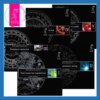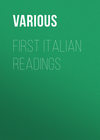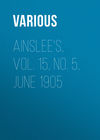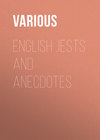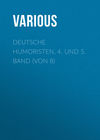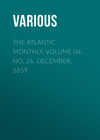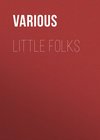Читать книгу: «Birds, Illustrated by Color Photography, Vol. 2, No. 2», страница 2
THE AMERICAN OSPREY
AN interesting bird, “Winged Fisher,” as he has been happily called, is seen in places suited to his habits, throughout temperate North America, particularly about islands and along the seacoast. At Shelter Island, New York, they are exceedingly variable in the choice of a nesting place. On Gardiner’s Island they all build in trees at a distance varying from ten to seventy-five feet from the ground; on Plum Island, where large numbers of them nest, many place their nests on the ground, some being built up to a height of four or five feet while others are simply a few sticks arranged in a circle, and the eggs laid on the bare sand. On Shelter Island they build on the chimneys of houses, and a pair had a nest on the cross-bar of a telegraph pole. Another pair had a nest on a large rock. These were made of coarse sticks and sea weed, anything handy, such as bones, old shoes, straw, etc. A curious nest was found some years ago on the coast of New Jersey. It contained three eggs, and securely imbedded in the loose material of the Osprey’s nest was a nest of the Purple Grackle, containing five eggs, while at the bottom of the Hawk’s nest was a thick, rotten limb, in which was a Tree Swallow’s nest of seven eggs.
In the spring and early autumn this familiar eagle-like bird can be seen hovering over creek, river, and sound. It is recognized by its popular name of Fish-Hawk. Following a school of fish, it dashes from a considerable height to seize its prey with its stout claws. If the fish is small it is at once swallowed, if it is large, (and the Osprey will occasionally secure shad, blue fish, bass, etc., weighing five or six pounds,) the fish is carried to a convenient bluff or tree and torn to bits. The Bald Eagle often robs him of the fish by seizing it, or startling him so that he looses his hold.
The Osprey when fishing makes one of the most breezy, spirited pictures connected with the feeding habits of any of our birds, as often there is a splashing and a struggle under water when the fish grasped is too large or the great talons of the bird gets entangled. He is sometimes carried under and drowned, and large fish have been washed ashore with these birds fastened to them by the claws.
Mrs. Mabel Osgood Wright says: “I found an Osprey’s nest in a crooked oak on Wakeman’s Island in late April, 1893. As I could not get close to the nest (the island is between a network of small creeks, and the flood tides covered the marshes,) I at first thought it was a monstrous crow’s nest, but on returning the second week in May I saw a pair of Ospreys coming and going to and fro from the nest. I hoped the birds might return another season, as the nest looked as if it might have been used for two or three years, and was as lop-sided as a poorly made haystack. The great August storm of the same year broke the tree, and the nest fell, making quite a heap upon the ground. Among the debris were sticks of various sizes, dried reeds, two bits of bamboo fishing rod, seaweeds, some old blue mosquito netting, and some rags of fish net, also about half a bushel of salt hay in various stages of decomposition, and malodorous dirt galore.”
It is well known that Ospreys, if not disturbed, will continue indefinitely to heap rubbish upon their nests till their bulk is very great. Like the Owls they can reverse the rear toe.
THE SORA RAIL
VARIOUS are the names required to distinguish the little slate-colored Carolina Rail from its brethren, Sora, Common Rail, and, on the Potomac river, Ortolan, being among them. He is found throughout temperate North America, in the weedy swamps of the Atlantic states in great abundance, in the Middle states, and in California. In Ohio he is a common summer resident, breeding in the extensive swamps and wet meadows. The nest is a rude affair made of grass and weeds, placed on the ground in a tussock of grass in a boggy tract of land, where there is a growth of briers, etc., where he may skulk and hide in the wet grass to elude observation. The nest may often be discovered at a distance by the appearance of the surrounding grass, the blades of which are in many cases interwoven over the nest, apparently to shield the bird from the fierce rays of the sun, which are felt with redoubled force on the marshes.
The Rails feed on both vegetable and animal food. During the months of September and October, the weeds and wild oats swarm with them. They feed on the nutricious seeds, small snail shells, worms and larvae of insects, which they extract from the mud. The habits of the Sora Rail, its thin, compressed body, its aversion to take wing, and the dexterity with which it runs or conceals itself among the grass and sedge, are exactly similar to those of the more celebrated Virginia Rail.
The Sora frequents those parts of marshes preferably where fresh water springs rise through the morass. Here it generally constructs its nest, “one of which,” says an observer, “we had the good fortune to discover. It was built in the bottom of a tuft of grass in the midst of an almost impenetrable quagmire, and was composed altogether of old wet grass and rushes. The eggs had been flooded out of the nest by the extraordinary rise of the tide in a violent northwest storm, and lay scattered about the drift weed. The usual number of eggs is from six to ten. They are of a dirty white or pale cream color, sprinkled with specks of reddish and pale purple, most numerous near the great end.”
When on the wing the Sora Rail flies in a straight line for a short distance with dangling legs, and suddenly drops into the water.
The Rails have many foes, and many nests are robbed of their eggs by weasels, snakes, Blackbirds, and Marsh Hawks, although the last cannot disturb them easily, as the Marsh Hawk searches for its food while flying and a majority of the Rails’ nests are covered over, making it hard to distinguish them when the Hawk is above.
THE SORA RAIL
This is one of our fresh-water marsh birds. I show you his picture taken where he spends most of his time.
If it were not for the note calls, these tall reeds and grasses would keep from us the secret of the Rail’s home.
Like most birds, though, they must be heard, and so late in the afternoon you may hear their clear note, ker-wee.
From all parts of the marsh you will hear their calls which they keep up long after darkness has set in.
This Rail was just about to step out from the grasses to feed when the artist took his picture. See him – head up, and tail up. He steps along carefully. He feels that it is risky to leave his shelter and is ready at the first sign of danger, to dart back under cover.
There are very few fresh-water marshes where the Rail is not found.
When a boy, I loved to hear their note calls and would spend hours on the edge of a marsh near my home.
It seemed to me there was no life among the reeds and cat-tails of the marsh, but when I threw a stone among them, the Rails would always answer with their peeps or keeks.
And so I used to go down to the marsh with my pockets filled with stones. Not that I desired or even expected to injure one of these birds. Far from it. It pleased me to hear their calls from the reeds and grass that seemed deserted.
Those of you who live near wild-rice or wild-oat marshes have a good chance to become acquainted with this Rail.
In the south these Rails are found keeping company with the Bobolinks or Reed-birds as they are called down there.





